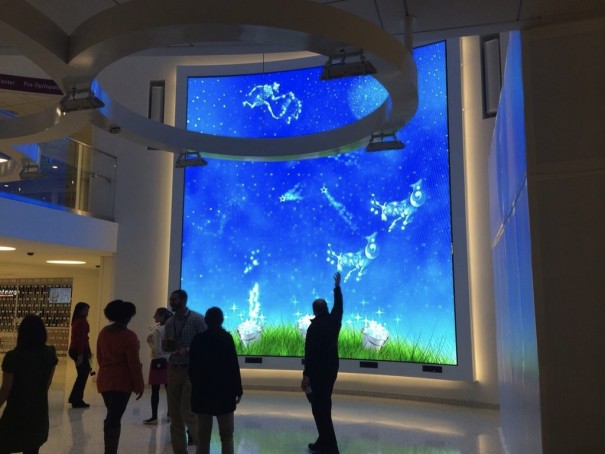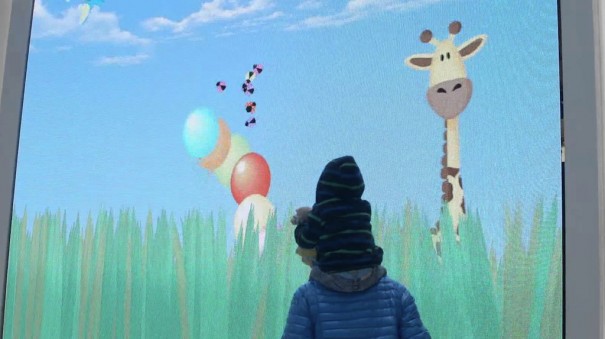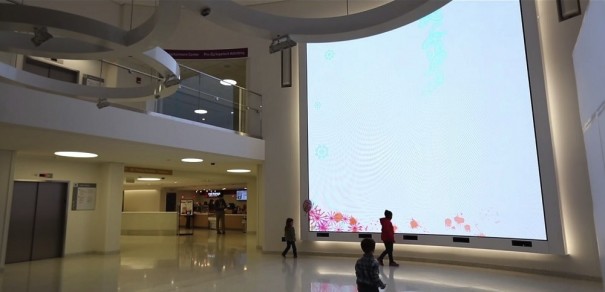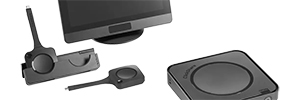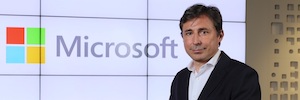Sistemas visuales interactivos para mejorar la estancia de los pequeños en los hospitales
Expertos en ingeniería y diseño digital, sistemas audiovisuales y psicología infantil, entre otros, han sumado sus conocimientos para hacer más amena la estancia de los niños hospitalizados, con el desarrollo de una gran pantalla interactiva curva con la que pueden interactuar con las escenas y efectos especiales que ofrece.
La tecnología está contribuyendo enormemente no sólo a mejorar la salud, sino a que la estancia de los enfermos hospitalizados sea emocionalmente más confortable y llevadera. Muchos han sido los casos de éxito analizados en Digital AV Magazine a este respecto, en los que los nuevos sistemas audiovisuales, táctiles e interactivos ofrecen su granito tecnológico para mejorar la recuperación de los pacientes, especialmente de los más pequeños.
Uno de ellos ha sido la colaboración realizada entre expertos en diseño digital, sistemas AV, medicina y psicología infantil para mejorar el entorno de los niños y familiares en el hospital infantil de Boston (EE.UU.) con el desarrollo de una pantalla gigante interactiva ubicada en el vestíbulo de entrada del centro pediátrico.
El proyecto, coordinado por un equipo de investigadores dirigido por Tim Hunter, profesor e investigador del departamento UConn Digital & Media Design de la Universidad de Connecticut (más conocida como UConn), se basa en una pantalla con resolución HD (de 5,5×7,3 metros) y ligeramente curvada que envuelve este espacio, a la que se ha incorporado la tecnología Kinect de Microsoft para que los pequeños puedan interactuar con sus movimientos.
Uno de los desafíos de este proyecto que se inició en 2012 y se ha puesto en marcha hace unos meses, como señala Samantha Olschan, profesora en el departamento de Hunter, “fue el propio diseño de la pantalla y la escala que debíamos desarrollar, ya que se trataba de fomentar la participación de los niños y no que las dimensiones de la misma les asustaran y no pudieran realizar actividades”.
Para ello, el equipo ha desarrollado nueve escenas interactivas infantiles, creativas y terapéuticas, que se combinan con efectos especiales que se activan con el movimiento de los niños ante la pantalla para que participen y jueguen con ella.
El sistema integra trece sensores Kinect (en la versión 2 de Kinect para Windows) y siete cámaras ópticas, que suministran los datos sobre los movimientos y gestos de los participantes, que se activan con la circulación y presencia de las personas, hasta doce, que pasan por delante de la pantalla.
Como explica Tim Hunter, “la idea era capacitar a los niños emocional y físicamente para que tomaran el control de las escenas de la pantalla, en un espacio y momento en el que no están en su rutina normal. Así, con un simple gesto de las manos, pueden reorganizar las estrellas en el cielo o mover las hojas de un jardín; o cuando se mueven delante de la pantalla, aparece un avatar que les sigue e interactúa con ellos”.
En el desarrollo de este proceso “la colaboración y experiencia de los miembros del hospital, expertos en psicología infantil y comportamiento humano, así como del cuerpo docente de UConn Digital & Media Design ha sido fundamental para lograr este reto con los niños, ya que este tipo de proyectos no suelen asignarse a una institución académica como la nuestra. Gracias a esta colaboración de investigación, el equipo ha sido capaz de centrarse no sólo en la solución técnica, sino en aumentar y humanizar la experiencia de usuario y que la tecnología, muy compleja, sea invisible para el resto y parezca que hace magia”, subraya Hunter.
[youtube]https://youtu.be/DD7gk2kHP3g[/youtube]
Te gustó este artículo?
Suscríbete a nuestro RSS feed y no te perderás nada.



